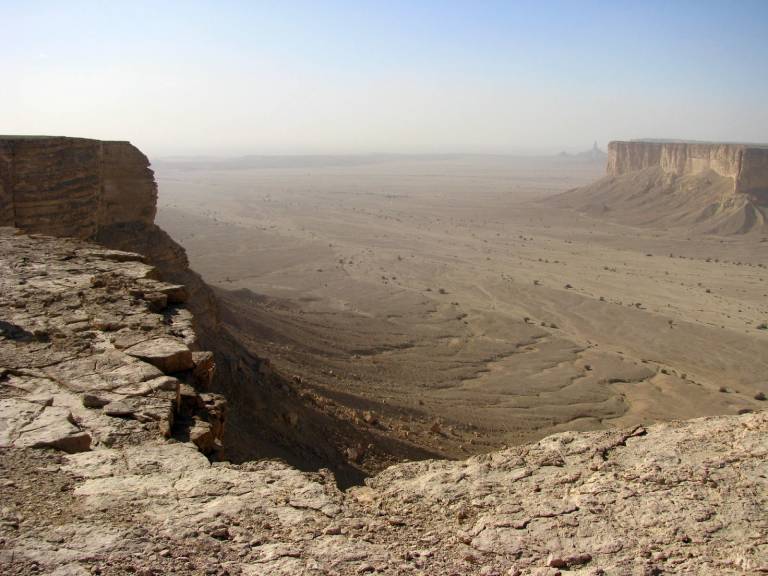Wet Seasons in the Nefud Desert featured many wetlands during the Pleistocene allowing hominin occupation
9 March 2017
Mid-latitude dune fields offer significant records of human occupations in southwest Asia, reflecting human responses to past climate changes.
 Currently arid, but episodically wetter in the past, the Nefud desert of northern Saudi Arabia provides numerous examples of human-environment interactions and population movements in the desert belt. Here we describe results from interdisciplinary surveys in the western Nefud that targeted palaeolake deposits identified using satellite imagery. Surveys indicate the presence of thousands of discrete palaeolakes and palaeowetlands, providing valuable palaeoenvironmental records, and numerous archaeological and palaeontological assemblages. Geomorphological investigations suggest that many further deposits remain buried. Forty-six prehistoric archaeological sites have been identified in association with freshwater deposits, spanning the Lower Palaeolithic to the pre-Islamic Holocene. Lower Palaeolithic sites appear concentrated close to raw material sources near the Nefud fringe, despite the presence of freshwater and fauna deeper in the dune field. Middle Palaeolithic occupations extend more broadly, and by the early Holocene humans were at least periodically occupying areas deep in the desert. We present the first records of Neolithic sites in this dune field, including substantial hearth complexes distributed relatively deep within the dunes, potentially indicating increased mobility during this period. Later Holocene sites with stone structures are present around the dune fringes. Our results indicate that, during wet periods of the Pleistocene and Holocene, water in the western Nefud may have been more readily available than elsewhere in northern Arabia due to the high density of depressions where wetlands can form. The high frequency of lakes or marshes appears to have facilitated human occupations and dispersal through the region.
Currently arid, but episodically wetter in the past, the Nefud desert of northern Saudi Arabia provides numerous examples of human-environment interactions and population movements in the desert belt. Here we describe results from interdisciplinary surveys in the western Nefud that targeted palaeolake deposits identified using satellite imagery. Surveys indicate the presence of thousands of discrete palaeolakes and palaeowetlands, providing valuable palaeoenvironmental records, and numerous archaeological and palaeontological assemblages. Geomorphological investigations suggest that many further deposits remain buried. Forty-six prehistoric archaeological sites have been identified in association with freshwater deposits, spanning the Lower Palaeolithic to the pre-Islamic Holocene. Lower Palaeolithic sites appear concentrated close to raw material sources near the Nefud fringe, despite the presence of freshwater and fauna deeper in the dune field. Middle Palaeolithic occupations extend more broadly, and by the early Holocene humans were at least periodically occupying areas deep in the desert. We present the first records of Neolithic sites in this dune field, including substantial hearth complexes distributed relatively deep within the dunes, potentially indicating increased mobility during this period. Later Holocene sites with stone structures are present around the dune fringes. Our results indicate that, during wet periods of the Pleistocene and Holocene, water in the western Nefud may have been more readily available than elsewhere in northern Arabia due to the high density of depressions where wetlands can form. The high frequency of lakes or marshes appears to have facilitated human occupations and dispersal through the region.
Prehistory and palaeoenvironments of the western Nefud Desert, Saudi Arabia
Paul S. Breeze, Huw S. Groucutt, Nick A. Drake, Julien Louys, Eleanor M.L. Scerri, Simon J. Armitage, Iyad S.A. Zalmout, Abdullah M. Memesh, Mohammed A. Haptari, Saleh A. Soubhi, Adel H. Matari, Muhammad Zahir, Abdulaziz Al-Omari, Abdullah M. Alsharekh, Michael D. Petraglia
DOI: 10.1016/j.ara.2017.02.002
 Close
Close

